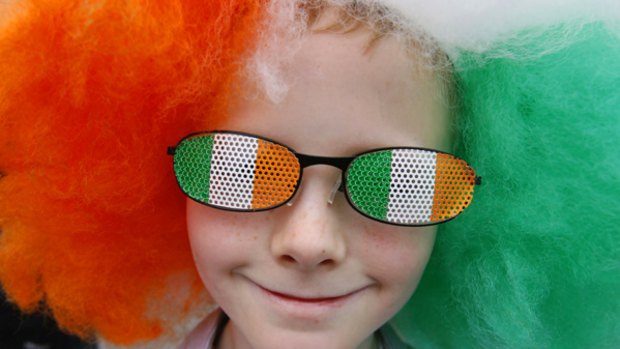By Fergus Shiel

Irish eyes ... Paddy's Day celebrations.Credit: AFP
The flat, granite stone is simply inscribed "PATRIC". Here in the grounds of Down Cathedral, in the town of Downpatrick, 33 kilometres south of Belfast, is the reputed resting place of St Patrick, the man credited with converting Ireland to Christianity, banishing the island's snakes and providing the excuse for Paddy's Day, March 17, the world's biggest annual celebration of all things Irish.
Folklore has it that Patrick shares this grave with Ireland's two other patron saints - Brigid and Columcille (aka Columba) - in a posthumous get-together. Hence the line of verse: "In Down, three saints one grave do fill, Patrick, Brigid and Columcille."
It's widely thought that Patrick was kidnapped in his teens and taken as a slave to Ireland, where he tended swine before escaping. He entered the priesthood, then returned to convert his kidnappers. But just as scholars disagree about the details of St Patrick's life - was he Welsh, Cumbrian or Roman? One man or two? - so they disagree about his death.
In fact, St Brigid is thought to be buried in County Kildare and St Columcille in Iona, while the precise spot of St Patrick's remains has been lost in hagiography and the mists of time.
Even so, it's generally thought that somewhere on this green hill is Patrick's actual grave. Local legend says it was hidden to stop punters from plundering its soil for good luck at the races.
Writing some centuries after Patrick's death, his biographer, Muirchu, recalled the drama of his burial in 461 (give or take 30 years) thus: "Untamed oxen were chosen and they steadily drew the cart containing the holy body placed on their necks and, guided by the will of God, they went out to Dun Lethglaisse (Down) where Patrick lies buried."
A short walk from the cathedral - destroyed by earthquake, plundered by the Vikings, burnt by the Scots and razed by the English - is the Saint Patrick Centre.
Up the hill from the centre is Downpatrick Gaol, now a museum featuring the United Irishmen's Rebellion of 1798 and the transportation of convicts to Australia. Between 1788 and 1868, 158,000 convicts were landed in Australia, including more than 50,000 Irish men and women transported directly from Ireland. Among the first 148 Irish convicts who set sail on board the merchantman Queen in April 1791 were six convicts from County Down. Hostages to fortune, just like St Patrick.
Sign up for the Traveller Deals newsletter
Get exclusive travel deals delivered straight to your inbox. Sign up now.